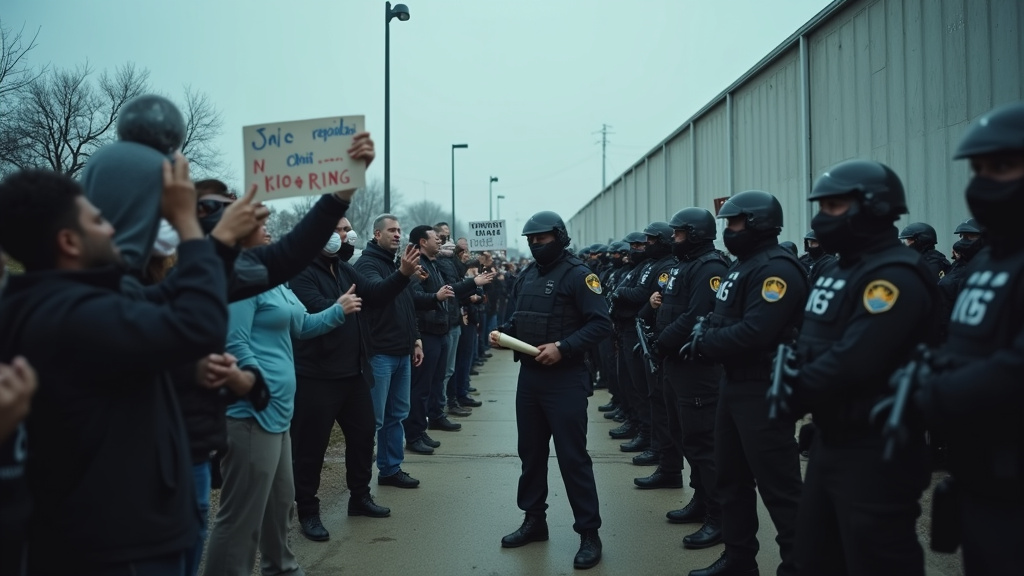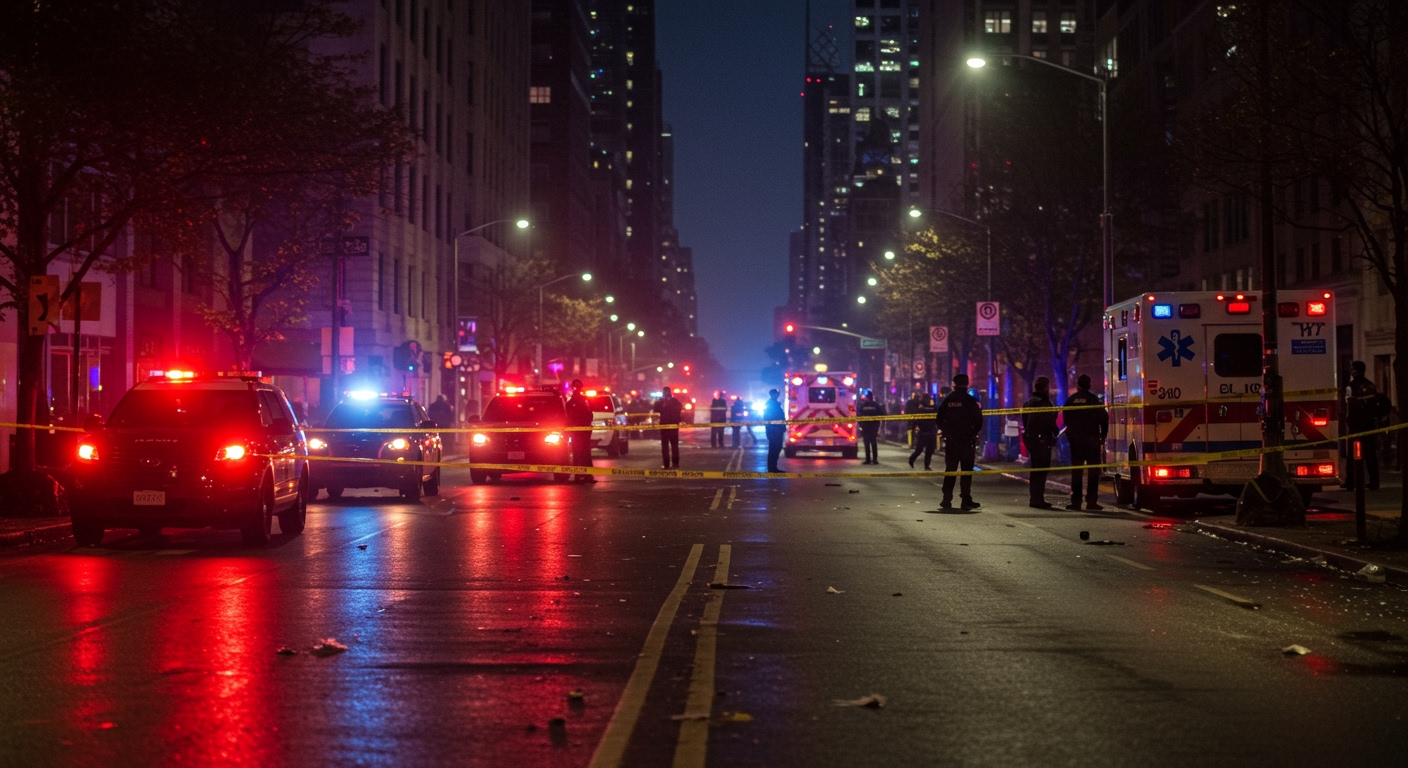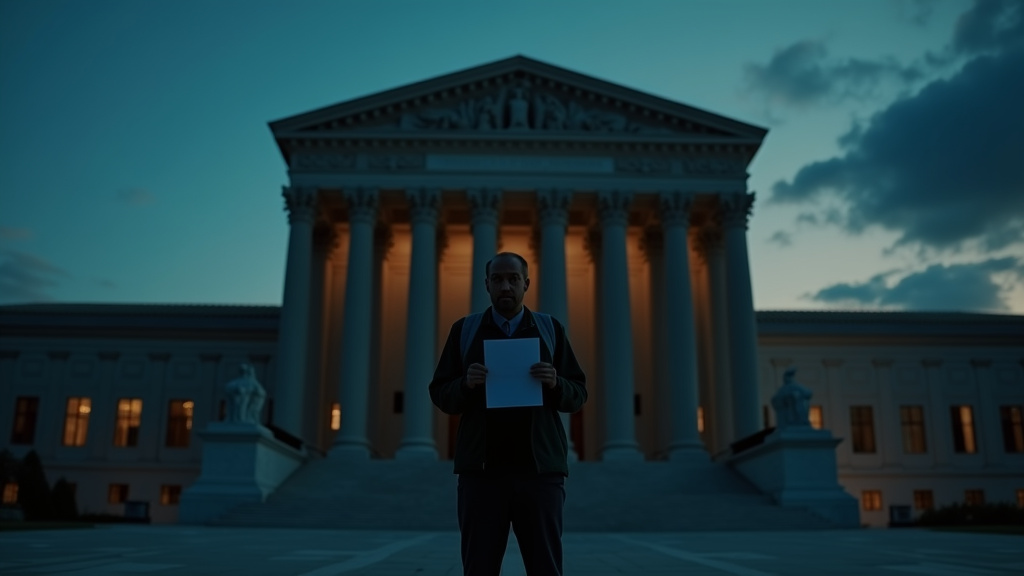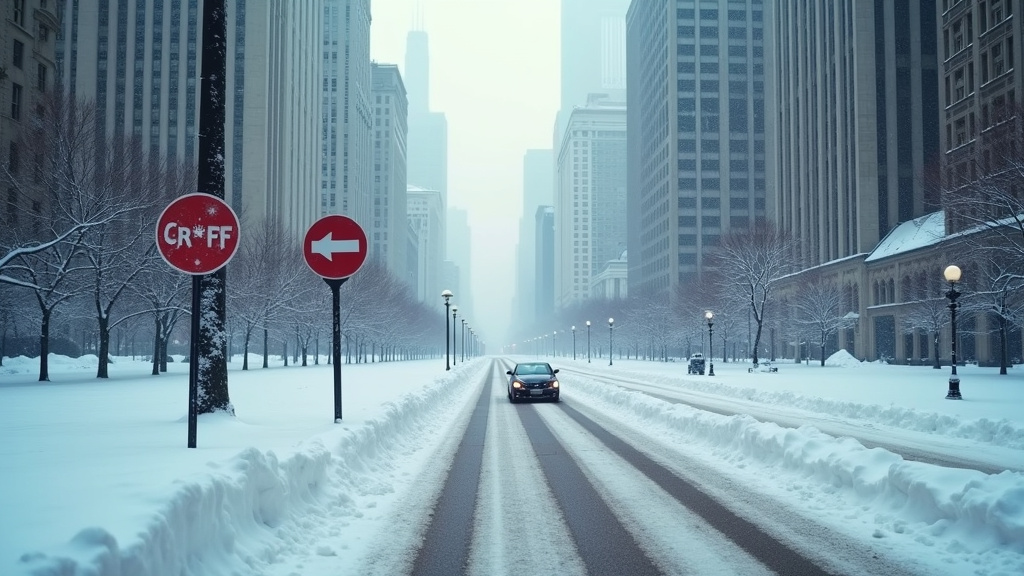A federal judge has ordered U.S. Immigration and Customs Enforcement (ICE) to remove an 8-foot fence erected around its processing center in Broadview, Illinois. U.S. District Judge LaShonda Hunt issued a temporary restraining order, ruling that the fence was constructed illegally and posed a significant public safety hazard by blocking access to village roads. The decision came after local officials argued the fence endangered residents and impeded crucial emergency services.
Dispute Over Access and Public Safety
The core of the dispute centers on the fence’s placement and its impact on the village’s ability to respond to emergencies. Broadview’s acting Fire Chief Matthew Martin had previously written to the U.S. Department of Homeland Security (DHS), demanding the fence’s immediate removal. He stated the fence was “illegally built” without a permit on a public street under the village’s jurisdiction, preventing the Broadview Fire Department from accessing an area vital for emergency response. “In case of fire or other emergencies at businesses located on the street, Broadview Fire apparatus would be unable to use the road to access these businesses,” Martin warned.
In her ruling, Judge Hunt found that the village was “likely to succeed on its claim that the Federal Defendants’ unilateral decision to put up a fence restricting access on Beach Street exceeds their statutory authority”. She further stated that the village had shown “irreparable harm in that the construction of a fence controlled by the Federal Defendants on the Village’s property prevents the Village from protecting the health, safety, and welfare of the public”.
Broadview Mayor Katrina Thompson hailed the ruling as “a validation of local law and, most importantly, a decisive win for public safety.” She added, “The judge’s decision confirms that the illegal fence constructed by ICE is not only a clear defiance of Broadview’s ordinance but an unacceptable and escalating risk to our Beach Street businesses, their customers, and our first responders”.
Background: Protests and Federal Assertions
The fence was erected around the ICE processing facility in Broadview, a suburb west of Chicago, following repeated protests against immigration enforcement operations, notably “Operation Midway Blitz”. Federal authorities argued that the fence was a necessary measure “to protect federal agents, federal property, and the public from harm as well as to prevent interference with federal law enforcement” amid ongoing demonstrations. Assistant U.S. Attorney Thomas Walsh suggested that the village’s alleged emergency was based on the possibility of a fire and the fence gate not being opened quickly enough for fire trucks.
The village sued, claiming the fence, installed around September 23, was a public nuisance, violated the Administrative Procedure Act, and was an impermissible “ultra vires” action. Judge Hunt noted that nothing in the Immigration and Nationality Act granted ICE the authority to build a fence on a public street or commandeer municipal property indefinitely without local consent.
The Broadview ICE facility has been a focal point for community concerns, with reports of escalating tactics by federal agents, including the use of tear gas, pepper balls, and rubber bullets against protesters and journalists. These actions have led to criminal investigations by Broadview officials into ICE activities. In a separate but related development, a federal judge had previously issued a temporary restraining order barring ICE agents from using “riot control weapons” against reporters, protesters, and clergy not posing an immediate threat.
Implications and Next Steps
The judge’s order mandates ICE to remove the fence, which was erected without local permits and on what the village considers public property. The ruling underscores the tension between federal authority and local jurisdiction, particularly concerning public safety and access. The broader context involves increased immigration enforcement in the Chicago area, leading to significant protests and a strong response from federal agencies.
This development is part of a trending news cycle concerning immigration enforcement and community relations in the Chicago area. As the fence is dismantled, the situation highlights ongoing debates about the balance between national security objectives and the rights and safety of local communities and their first responders. The implications of this legal victory for Broadview may set precedents for future disputes between local municipalities and federal agencies regarding infrastructure and public access on local roadways, marking a significant news event for the region.















